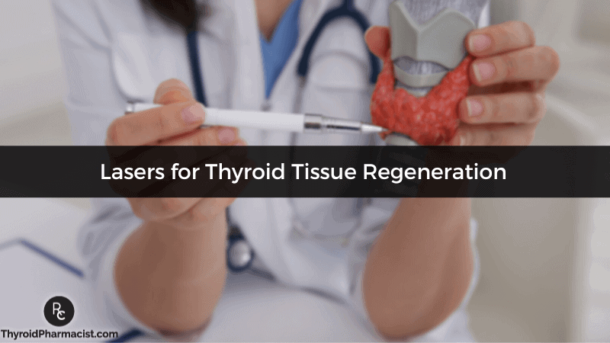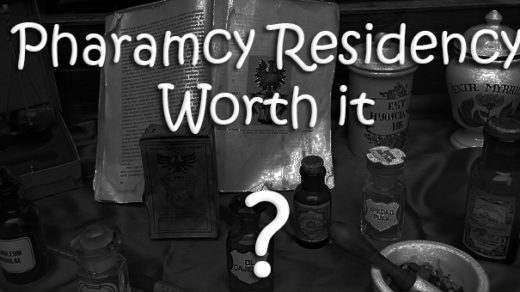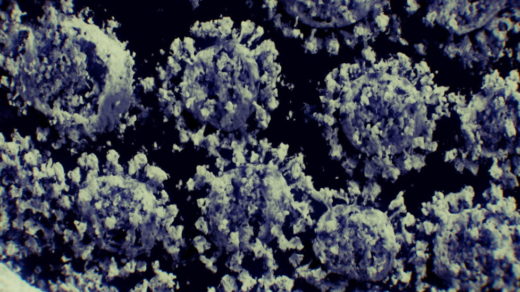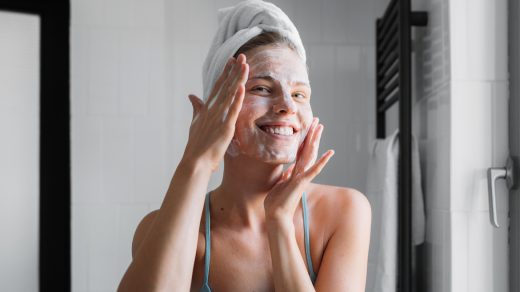Is it possible to get off thyroid medications or regain thyroid function without taking medications when you have Hashimoto’s?
Here’s an excerpt from my book, Hashimoto’s Protocol:
Most physicians and endocrinologists will say that in Hashimoto’s, hypothyroidism is irreversible and ends with complete thyroid cell damage, leading to a lifelong requirement of thyroid hormone medications.
However, this isn’t always true! One study reported that thyroid function spontaneously returned in 20 percent of patients with Hashimoto’s. These individuals will return to normal thyroid function even after having taken thyroid hormone replacement for many years, and may be weaned off thyroid hormones safely. [1]
Studies show that once the autoimmune attack ceases, the damaged thyroid has the ability to regenerate. Thyroid ultrasounds will show normal thyroid tissue that has regenerated, and the person will no longer test positive for thyroid antibodies. [2]
In some cases, the person will become hyperthyroid, and the dosage of their medications will need to be reduced. In other cases, individuals may find that the thyroid hormones become “built into” their physiology, and that the presence of the external hormones will suppress their internal thyroid hormone production. Thus, the recovery of thyroid function in these individuals becomes more difficult to “catch.”
Physicians can perform thyroid ultrasounds to look for normalization of thyroid tissue as well as check for thyroid antibodies. If thyroid appearance on an ultrasound normalizes and antibodies are in the remission range, a trial of slowly tapering thyroid medications may be attempted.
Additionally, researchers report that a test can be done by administering TRH (Thyroid Releasing Hormone), which will cause an increase in T3 and T4 if the thyroid has recovered. While this is the best test to determine if a person can be weaned off thyroid medications safely, it is rarely used outside of research.
I personally haven’t seen too many reports of these “spontaneous regenerations of thyroid tissue,” outside of postpartum thyroiditis cases; rather, I work with clients who take action to induce remission of their conditions, and in some cases, these clients also show a regeneration of thyroid tissue. In addition to the people I’ve worked with directly, I’ve corresponded with readers who have induced remissions and regenerations of their thyroid glands.
There is a therapy that may induce remission and regeneration of the thyroid gland, as well as help with Hashimoto’s symptoms — low-level laser therapy.
Low-level laser therapy (LLLT) may reduce thyroid antibodies and induce thyroid tissue healing in Hashimoto’s, as well as offer other potential health benefits!
Lasers that emit LLLT are also known as “cold lasers,” and have been shown to regenerate various tissues when the therapy is applied directly over an organ. This therapy, known as “photobiomodulation,” can be achieved using a laser (this is the most studied but least accessible option) and perhaps an LED device (this is the least studied but most accessible option).
LLLT can increase circulation in the thyroid gland and increase thyroid hormone levels. While most body organs are not accessible to laser therapy, the thyroid gland is close enough to the skin’s surface so that a laser or light can penetrate it.
Additionally, LLLT is painless, non-invasive, low-cost, and carries a low risk as it does not use ionizing radiation.
I want to share some information about LLLT with you and discuss some interesting research.
In this article, you will learn about:
- How LLLT works
- Existing LLLT research
- Some uses and benefits of LLLT for thyroid health
- Laser therapy in clinical settings and LED devices for at-home use
Can Thyroid Tissue Really Regenerate?
Just to back up here, I want to state that weaning off thyroid hormones is never the first thing I recommend for people with Hashimoto’s. Rather, my first recommendation is often to optimize thyroid hormones by using thyroid medications!
This is because your first plan of action should be to make yourself feel better. You are not going to feel better if you are thyroid hormone deficient. Optimized thyroid hormones play an important role in your body and will accelerate your healing. The fastest way to optimize your hormones is to take them externally, as a medication.
I’ve written a great deal about optimizing medications, and my book Hashimoto’s Protocol has an entire chapter on optimizing thyroid hormones that also addresses the latest innovations, old school remedies for tissue regeneration, and common questions asked by readers!
As you’re optimizing your hormones, it’s also important for you to adjust your lifestyle and address any imbalances in your body that have resulted from your condition and/or have led you to develop the condition.
This is where eliminating toxins like fluoride from your life, addressing your stress response, and improving your digestion and nutrition, come into play.
With these interventions, you will feel significantly better, and in many cases, you may be able to reduce or eliminate the attack on your thyroid. This can be measured objectively by your thyroid antibodies. You should see them reduced to under 100 kU/L. The lower the better, but under 100 kU/L seems to be a good number where there is more healing than damage happening.
If the attack is not fully eliminated, you will also need to follow advanced protocols like clearing infections, toxins, and traumatic stress, until the autoimmune attack is fully addressed.
In some cases, people who use functional medicine protocols may find that their thyroid function begins to improve. If they are already taking thyroid medications, they may find themselves overmedicated, and may need to work with their doctors to reduce their dosage of thyroid medications.
In other cases, a trial of reducing the dosage of thyroid medication may be indicated to see if the thyroid gland can produce hormones again.
I don’t recommend this for most people with Hashimoto’s; however, in those who no longer have significantly elevated thyroid antibodies and who’s body is healing at a faster rate than it is destroying itself, some progressive doctors may consider a trial of weaning off medications.
At that point, you would gradually reduce the dose of medication under your physician’s supervision to allow your body to step in and compensate.
Some people will present with hyperthyroidism as their bodies begin to heal and absorb more of their thyroid medications, or begin to produce more of their own hormones as their thyroid tissue regenerates.
Seeing a person with palpitations and a suppressed TSH will encourage most physicians to lower the dose of thyroid medications.
Thyroid medications should never be stopped abruptly, due to the complicated feedback mechanisms of our hormones. You’ll want to give your body an opportunity to slowly get used to producing thyroid hormones. Thus, thyroid medications should be reduced very gradually under the supervision of a physician. A dose reduction of 25 mcg equivalent of levothyroxine every 4-6 weeks, supported by lab tests, is the safest bet for most people.
Coming off thyroid hormones too early when you still have symptoms, triggers, and antibodies on board, and when your thyroid has not regenerated, can be devastating and delay your healing.
So now that you know the warnings, precautions, and order of operations, let’s go deeper into the factors that predict success in weaning off thyroid medications, that I’ve observed:
- A younger age (children seem to regenerate thyroid tissue faster, as do younger people)
- Diagnosis during the subclinical state (e.g. starting lifestyle changes sooner than later)
- Taking thyroid hormones and/or having the disease for a short duration
Some of the interventions that can help you successfully wean off thyroid hormones include getting off gluten, getting thyroid antibodies in the remission range (under 100 kU/L, but the lower the better), getting plenty of rest, using an infrared sauna, resting/physical relaxation that helps your body go from fight-or-flight to rest-and-digest mode, getting your nutrients (especially selenium, vitamin D and ferritin) in balance, and eliminating toxins/infections within the body/thyroid gland.
My book, Hashimoto’s Protocol, focuses on helping you to identify and remove your triggers, like gluten sensitivity or a nutrient deficiency, adjusting your nutrition to support your blood sugar and nutrient deficiencies, helping your body eliminate toxins, and reducing your stress response.
However, even with all of your ducks in a row, not everyone will be able to reduce and eliminate the need for thyroid medications. Even in doing everything right, not everyone heals at the same rate. This is where interventions for accelerating thyroid tissue healing can really help!
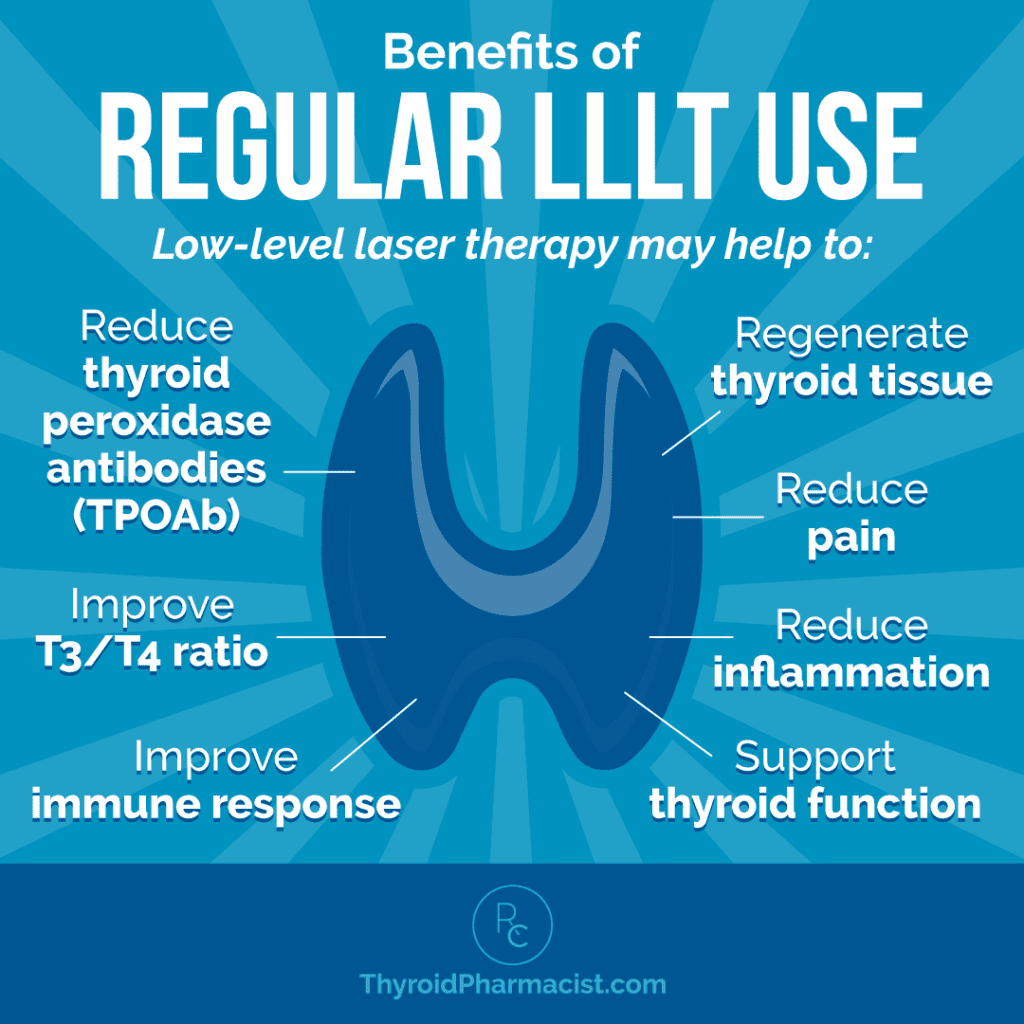
Studies on Low-Laser Therapy (LLLT) for Thyroid Health
Researchers have been studying the effects of low-level laser therapy (LLLT) on the thyroid gland in Hashimoto’s thyroiditis, and the results have been astonishing!
Research shows that LLLT seems to reduce thyroid gland damage, promote tissue recovery, accelerate thyroid recovery, help the thyroid function, and stimulate blood circulation into the thyroid gland. Many people who start LLLT are able to lower their thyroid antibodies and reduce their need for thyroid medication. 🙂
In those with autoimmune thyroiditis, reactive oxygen species (ROS), which can contribute to cell death, seem to reproduce in the thyroid gland in high levels, and LLLT may reduce ROS in the thyroid gland. LLLT also appears to increase Transforming Growth Factor β (TGF-β), which is an anti-inflammatory cytokine. TGF-β modulates inflammation and helps to induce and maintain the “tolerance of self” (which means the immune system is more capable of recognizing itself and less likely to attack itself), thus also reducing thyroid autoimmunity.
LLLT also appears to decrease TPO antibodies, as well as improve the regeneration of thyroid follicular cells. [3]
I want to also mention a few animal and human studies that have been done on LLLT and thyroid health to date.
Animal Studies
In studies on animals with healthy thyroid tissue, LLLT appears to improve blood circulation and help balance T3 to T4 ratios. [4]
Azevedo et al. looked at how LLLT may affect the thyroid gland in 65 male rats with hypothyroidism. Laser therapy appeared to change the shape/structure of thyroid cells (thyrocytes) and follicles, change the size/volume of the thyroid gland, and improve hormone secretion. [5]
Another study evaluated whether low-level laser treatment (a Helium-Neon laser at 632.8 nm) could be used to repair the damaged thyroid gland tissue in rats after exposure to radiation. According to the researchers, “One inescapable feature of life on the earth is exposure to ionizing radiation. The thyroid gland is one of the most sensitive organs to gamma-radiation and endocrine disruptors.” I was excited that they were looking for a way to mitigate these effects. The rats that had experienced thyroid damage after exposure to radiation and were treated with LLLT, showed improvement in thyroid function, as well as liver function and antioxidant levels, versus the control groups. [6]
One other study in rabbits assessed whether photobiomodulation used for bone healing in the jaw affected the thyroid and sublingual glands, and no changes in size or shape were noted. [7]
Human Studies
Researchers in a Brazil study found that all patients who received the therapy were able to reduce their levothyroxine dose, while 47 percent were able to discontinue levothyroxine and have normal thyroid function during the 9-month follow-up.
In their initial pilot study, researchers tested LLLT on 15 patients who had Hashimoto’s and were treated with levothyroxine. Patients received 10 applications of LLLT (830 nm, output power 50 mW) in continuous mode, twice per week for five weeks, over the thyroid gland. [8]
Thirty days after the LLLT intervention, they began to see improvements on the thyroid ultrasounds. Thyroid antibody levels began to decrease within two months of the LLLT, and thyroid function began to improve and continued to improve until it reached a peak at 10 months post treatment.
Thirty days after the LLLT treatment, medications were discontinued and then reintroduced, if needed. Researchers tested levels of thyroid hormones, TPOAb, and TgAb, at 1, 2, 3, 6, and 9 months after stopping the levothyroxine. Fourty-seven percent of the patients were able to stop levothyroxine altogether and maintain normal thyroid function. The rest were able to reduce their dose of medication.
- The average levothyroxine dose dropped from 96 +/- 22 mcg/day, to 38 +/- 23 mcg/day.
- Out of 15 people, 10 saw a reduction in thyroid antibodies, while two did not see a change, and three saw an increase. The mean TPO level reduced from 982 IU/mL to 579 IU/mL over the course of the study. The greatest improvement was from 2354 IU/mL to 135 IU/mL.
- With respect to TG antibodies, eight people saw a reduction, five people did not see a change, and two saw an increase. The mean TGAb dropped from 650 U/mL to 517 U/mL, while the greatest reduction was from 966 U/mL to 35 U/mL in one person.
- Before the treatment, 20 percent had reduced thyroid volume, 27 percent had increased volume, and 53 percent had normal volume. After the treatment, 43 percent of the people who had an abnormal thyroid volume saw that their thyroid size had normalized. The remainder also saw an improvement toward normalization, reaching near-normal values. Thus, this therapy may also be helpful for reducing goiter size.
This group also performed a randomized, larger placebo-controlled trial of 43 patients in 2011.
The results showed:
- A reduction of levothyroxine dose from a mean of 93 mcg to 38 mcg:
- 95.7 percent of people in the treatment group were able to reduce or stop medications!
- 47.8 percent of the group no longer needed thyroid medications!
- A reduction in TPOAb, mean 1289 IU/mL to 656 IU/mL (around a 50 percent reduction)
- A reduction in TG antibodies, 720 IU/mL to 656 IU/mL
- Normalization of thyroid volume (in 66 percent)
- Less infiltration of the thyroid gland on ultrasounds (meaning fewer inflammatory cells were present). The echogenicity index on a thyroid ultrasound was improved in 95 percent of the study group, meaning that their thyroid gland had less damage and fewer white blood cells on an ultrasound.
The Materials and Methods Used in the Brazilian Studies
Patients received thyroid ultrasounds and a surgical pen outlined the boundaries of their thyroid gland. They received 10 applications of LLLT (830 nm, output power 50 mW) in continuous mode, twice per week for five weeks, over the thyroid gland (707 J/cm² for 40 seconds in each spot). The laser that was used was from Thera Lase, DMC, San Carlos, Brazil, with a Beam area of 0.02827 cm cubed. Similar lasers are used in dental procedures. [9]
A follow-up study done in 2018 (also led by Hofling) assessed the same group of 43 people six years after the clinical trial. The LLLT group still had lower levels of TPOAb and a lower dosage requirement for levothyroxine. In addition, there were no new thyroid nodules, suggesting that the treatment would not negatively affect the thyroid gland. [10] I initially wrote a guide on LLLT for my clients in my Hashimoto’s Self-Management Program in 2014, before the follow-up study was done, and was concerned that the effects wouldn’t last. Thankfully, this follow-up study shows that they do!
In a different clinical trial, Dr. Hofling and his team evaluated 43 patients with chronic autoimmune thyroiditis, to see if LLLT worked to improve abnormal thyroid tissue growth (parenchyma vascularization). Two groups had ten sessions of either LLLT or a placebo, twice a week for five weeks. They found that the LLLT-treated group had higher levels of normal tissue growth (normal vascularization) than the control group. Though this was a small study, these results suggest that the LLLT treatments had contributed to normalized thyroid tissue growth, as well as improved circulation to thyroid arteries, thus showing better blood flow in the thyroid and more repair happening. [11]
In a different study on 42 autoimmune thyroiditis patients in Moscow done in 2000 (led by Mikhailov et al.), results showed that LLLT may be beneficial with regards to autoimmune response; in 78 percent of patients, autoimmune responses were normalized after four months of LLLT therapy. [12]
In another study that was just published in 2020 by Ercetin and colleagues, 350 patients with Hashimoto’s were studied! This study examined the effects of red light therapy on thyroid function, antibody levels, and whether or not the patients experienced a decrease in hormone therapy. I am grateful that the study also focused on quality of life: a researcher’s way of asking, did the people who went through the therapy feel better as a result?
Participants were classified into two groups, where all participants received dietary supplementation such as vitamin D, iron, and selenium, with one group also receiving light therapy in two-second long applications directed at the thyroid gland, twice a day for three days. The study used an 850 nm wavelength low-level laser light.
The group using light therapy (versus the control group) experienced a greater increase in T3 levels, T3/T4 ratios, as well as a more significant reduction in thyroid peroxidase antibodies.
They also showed a greater decrease in levothyroxine dose needs post-treatment. Most importantly, their symptoms had improved. 🙂
I was excited to see that the researchers also combined some of the best practice recommendations I often preach, such as optimizing vitamin D, taking selenium, and addressing low iron/ferritin (this article will be coming to your inbox next week, if you are subscribed to my newsletter… :-)).
I previously wasn’t sure if supplements could be combined with low-level laser therapy, but thankfully this study has shown that people can still benefit from the synergistic effects of LLLT and supplementation.
The research concludes that photobiomodulation appears to be effective for improving T3/T4 ratio, decreasing TPOAb, and decreasing thyroxine therapy needs, as well as offering anti-inflammatory benefits. [13] Because this study had such a great number of people, the researchers were able to really establish that the benefits of LLLT were real (and not just a random occurrence) in the world of clinical research.
I was excited to see a review article published in 2022, that concludes: “Besides current treatment strategies, LLLT could be a promising therapeutic approach for the treatment of AIT [autoimmune thyroid disease].” [14]
Review articles are done by a group of researchers who review the data of clinical trials and compile them to come to a consensus. Review articles are often used by some of the less innovative practitioners to make clinical decisions, so I am hoping that with this in the press, more practitioners will start to offer LLLT to thyroid patients!
So What Exactly is LLLT?
Low-level laser (light) therapy (LLLT), known as photobiomodulation, is a general term for using non-thermal, low-intensity lasers or light-emitting diodes (LED lights) at specific wavelengths to promote healing. This is also referred to as red light therapy (RLT), cold laser therapy, or photobiomodulation.
The therapeutic mechanism at work here is believed to be as follows: when tissues are exposed to low levels of red and near-infrared (NIR) light, the light penetrates into the tissues in a directed manner (without causing harm to the tissue), and stimulates signaling pathways in the cells at the mitochondrial level.
It seems that LLLT affects the cells at a molecular level and affects a variety of tissues as well. Researchers believe that RLT works by stimulating the mitochondria, which can enhance energy production and allow cells to function more effectively, leading to reduced fatigue, improved healing, and improved mitochondrial function. [15]
Although we may refer to LLLT, photobiomodulation, and red light therapy from LED (light-emitting diode) devices somewhat interchangeably, it’s important to note that there are technical differences between professional lasers and at-home LED therapy devices. LED therapy can expose a person to low levels of red and/or near-infrared light waves, whereas the lasers used in clinical settings are more intensive with a greater energy impact.
Light Therapy 101
Red light is visible, typically hits the surface of the skin, and is at wavelengths at 630-700 nm; at 810-850 nm, near-infrared light can penetrate several layers into the skin.
Laser light consists of a narrow beam that can be directed or pointed at one small spot. Because lasers are more intense than regular light (such as the red and near-infrared lights mentioned above), cold lasers must be administered by professionals with specialized training.
(Please do not confuse cold lasers with traditional lasers that are used for surgery — for instance, the type used to correct vision problems or perform laser ablative surgeries; these lasers are known as “hot lasers.” :-)) [16]
Scientists believe that cold lasers may induce ATP production and DNA synthesis in stem cells, and that there may be benefits in the area of immune system modulation and collagen synthesis, as well as wound healing. The overall effects of LLLT depend on the properties of a given laser and treatment type; for instance, depending on the treatment and setting (home use versus a clinical setting), results can vary depending on factors such as light wavelength, size of the bulb, mode, strength of the light, exposure time, targeted area, and the length of the course of therapy. [17]
Benefits of Low-Level Laser Therapy
Research shows that LLLT can reduce inflammation and pain, and promote tissue regeneration. Most of the research shows promising results (some results are inconclusive) regarding the use of LLLT for health issues such as neurological/brain disorders (including stroke and traumatic brain injuries), [18] skin problems (such as acne, herpes lesions, scars, and psoriasis), [19] and orthodontic issues. [20] Furthermore, some companies are using LLLT for hair regrowth as well.
LLLT appears to help reduce pain and inflammation (to an extent) from chronic conditions such as arthritis and fibromyalgia. [21] It may be effective for pain, spasms, and inflammation in both the short and long term. It is thought that LLLT helps with blood flow and joint inflammation because it seems to trigger the relaxation of smooth muscles in the blood vessels, allowing more oxygen to get to the affected cells. People may experience pain relief immediately, with a decrease in inflammation in hours or days. [22]
There is also some evidence that LLLT can be useful in the treatment of neuropathic pain. [23] Neuropathic pain typically manifests as pain, “pins and needles” sensations, burning, stiffness, and numbness, but there may be other types of symptoms too, including feeling more pain from a stimulus that does not normally cause pain. This happens from nerve damage (temporary or permanent) due to illness (for instance, diabetes, shingles, multiple sclerosis, inflammatory disorders) or injury. [24]
Carpal tunnel is another example of neuropathic pain. When I was first diagnosed with Hashimoto’s, I had carpal tunnel in both arms. Various B vitamins can help with different types of pain. B12 can help neuropathic pain, when taken in high doses of 40 mg/day. The active form of B6, P5P, taken at a dose of 100-200 mg/day, can help as part of a protocol for carpal tunnel syndrome.
By the way, I have plenty of other suggestions for managing pain with Hashimoto’s — please check out my article on pain and Hashimoto’s for more information!
Can LLLT Be Combined With Other Strategies for Hashimoto’s?
When I first started educating people about LLLT and discussed it with local clinicians who were using it in their patients, I learned that people did see benefits, but they weren’t as impressive as the benefits in the research studies.
I began to wonder why. There is a school of thought that taking antioxidants, like vitamin C, selenium, and N-acetyl cysteine (three supplements that are normally really helpful for Hashimoto’s), may negate the effects of the LLLT. Steroid medications and anti-inflammatory medications may also make LLLT less effective.
In theory, this could be because LLLT works to produce healing by initially increasing oxidative stress in the thyroid gland. The antioxidants/anti-inflammatories may block this initial upregulation that sets off the healing cascade. [25]
However, a 2020 study of 350 people done by Ercetin and colleagues, actually used iron, selenium, and vitamin D, and still got impressive results. So my approach would be to still use all of the therapies synergistically, if they are indicated and helpful.
In essence, if you are low in vitamin D or ferritin, then don’t be afraid of proper supplementing just because you’re using LLLT!
Clinical Professional LLLT Providers
When I first read the studies on low-level laser therapy for Hashimoto’s back in 2014, I was so excited that I ordered one of the lasers from Brazil! It was super expensive and took a few months to ship, and worst of all, it was super intimidating. I had read the study that specified how the laser was used, but upon receiving it, I quickly realized that I had no business using the laser without advanced training. 🙂
I was worried that I would burn my eyes out, haha.
Fortunately, my colleague Dr. Kirk Gair from West Covina, CA, who is also a Hashimoto’s patient, has used cold lasers in his clinic since 2004 and has developed protocols that combine LLLT with chiropractic modalities. He has seen such phenomenal results with using lasers in his practice that he is now training other practitioners on how to do so!
I’m excited that these days, you do not need to order a laser from a foreign country and get training on how to use it, as more clinics have adopted this technology. 🙂 You might be able to find one in your area.
Laser Therapist Listings
LLLT Companies That Offer Practitioner Training
Red Light Therapy Devices for Home Use
After reading the impressive studies about cold laser therapies for the thyroid, I got the idea to create a red light therapy device for home use. After hours of researching and consulting with experts, I put the idea on hold, as the logistics and expense of this type of invention were challenging and expensive, to say the least. (I found out that I would need a billion dollars to do so, lol — if you know any billionaires, send them my way. :-)) In the meantime, I’m excited to help to spread the word and to vet various practitioner trainings and in-home devices to share with you (and have been negotiating discount codes for you whenever available).
I’m excited to report that since the initial publication of this article in 2017, various individuals and companies have created more accessible, direct-to-consumer devices to provide red light therapy; most of them use LEDs instead of lasers.
While lasers have the most research behind them, they’re also the least accessible. In contrast, LEDs are much more cost-effective and easy to use. That said, the evidence for red light therapy from LEDs is still anecdotal, as there have not been large clinical trials looking at how effective they are specifically.
In my personal experience, some of my readers have reported benefits from using at-home LED devices, and I think they’re worth trying!
Today there are a number of handheld devices (as well as other red light therapy products) on the market that are available for direct-to-consumer purchase and use. If you try one of these devices, please be sure to follow the instructions for the individual products, as usage will vary. Also please note that the effectiveness of a given unit may vary depending on its size and power, as well as on the length of treatment and how far away the light is from your skin.
In the last few years, numerous consumer devices have come out that use similar frequencies to those used in photobiomodulation studies. Rather than using expensive and difficult-to-use lasers, however, the new devices are built with LED technology.
This allows individuals to purchase and use the devices at home! I have personally tested out dozens of LED devices, and I am sharing the ones that I have tried and found to be promising (and much less intimidating than the cold laser I bought in 2014, haha). Please note that most of them do include eye goggles so that you will not burn your eyes out. 🙂
As a side note, I think I need to do a video of my biohacking closet with all of the devices, foods, and supplements that I’ve tested out! 😉
Here’s what one reader, Kim, has to say about red light therapy:
“I have been using a Red Light Therapy bed for the past 3 months and it has been life changing for me. Many of the issues from being permanently hypothyroid are gone. The 24/7 body aches and burning is gone, my chicken skin and psoriasis is gone, my stamina has improved 90% and my depression is almost entirely gone. I go 3-4 times a week for 20 minutes each session to a tanning salon which has 2 red light beds. As far as the heat of it, they have a fan which you can either have blowing on you or turn to just circulate around the room to keep it cool but I am heat intolerant and it doesn’t really bother me much, it actually feels good during the winter months. I have done all the research and red light is very safe.”
Recommended Red Light Therapy Devices
Here are a few products that you may wish to consider if you are interested in red light therapy at home. In lieu of creating my own light therapy device, I have put my time and resources into compiling resources for you, and have even worked out some discount codes for my readers!
I personally have all of these devices at my home and have found them easy and intuitive to use (unlike the super expensive laser I ordered from Brazil, haha).
If you try any of these devices, please let me know what you think!
(Note that specific recommendations for use will be different depending on the device, so please follow the instructions carefully after purchase. :-))
Lumebox
Lumebox light therapy products offer exceptional benefits without UV rays, and are third-party tested for safety and strength. All Lumebox products are FDA-registered, follow the Good Manufacturing Practice (GMP) system, and every batch is third-party tested.
I suggest trying this powerful handheld device that you can use from the comfort of your home or take anywhere. Target it on any body part to reduce joint pain, reduce inflammation, improve energy, help with muscle recovery, balance mood, and more. This special offer includes a handheld red light, a travel case, a state-of-the-art, extra-long-life battery, a removable comfort-grip accessory, premium LED bulbs, an AC adapter, a manual, and protective eyewear.
This is a small device, so it can be used easily on your face and thyroid.
This device normally retails for $599 USD, but right now you can get an exclusive discount of $250 off when you use this link!
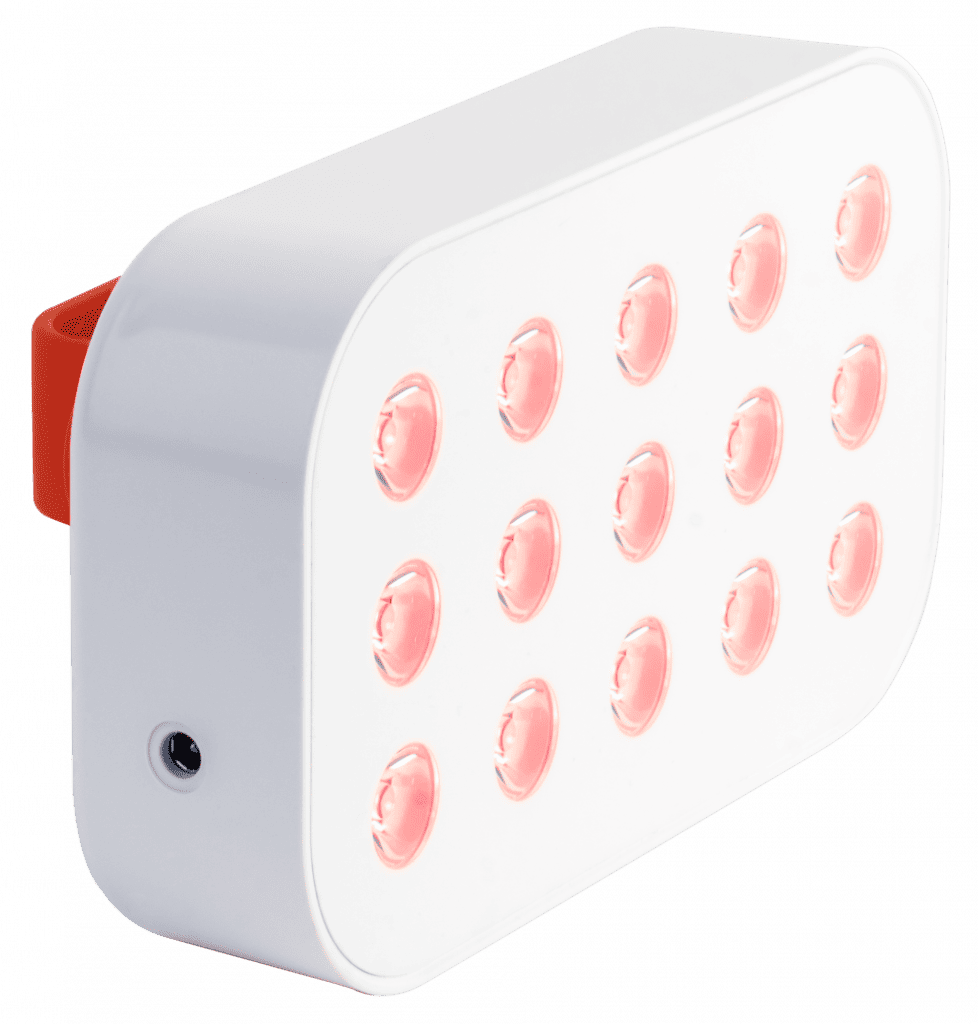
Red Light Rising
Red Light Rising’s Target Light 2.0 is a powerful, third-party-tested handheld device developed with thyroid health in mind. It’s designed to target smaller areas, and you can use it anywhere on the body for pain, skin health, inflammation, and much more!
A big pro with this one is that at 15 x 12 cm (about 5.9 x 4.72 inches), it’s small enough to take in your carry-on when you travel. You can also just plug it into a regular desk lamp at home.
This might not be the best choice for you if you are looking for something that can target a larger area at one time.
This device retails for about $200 USD — use this link and discount code THYROID10 for 10% off your purchase!
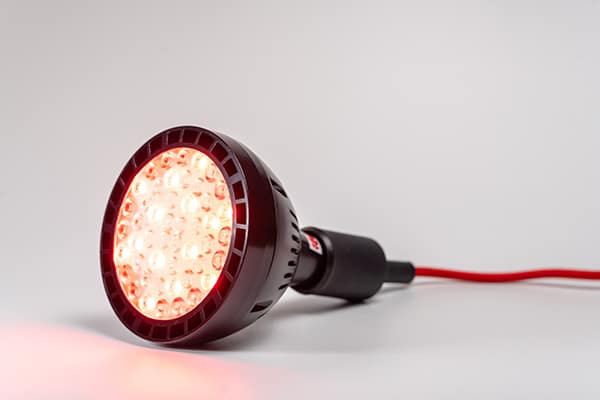
Carex Red Light Therapy
Carex Red Light Therapy Pain Relief Products were originally developed by NASA to help astronauts maintain muscle mass in space. Carex now offers a range of red light therapy products we can use at home for pain, including pain related to issues like fibromyalgia, bursitis, and arthritis. They may also help with circulation, skin healing, inflammation, and more!
If you’re not sure where to start but are looking for pain relief, you may wish to try the DPL Clinical Handheld Light Therapy for Pain. This Class II medical device is FDA-cleared and meant to target all kinds of pain. It uses an 880 nm infrared light plus a 660 nm red light for deep penetration into the skin. The company recommends using it for 20-minute sessions, up to three times a day.
This could be a great choice for you if you are looking for something portable that can help you with joint pain issues such as arthritis, or if you’ve had issues with muscle spasms. It may help with circulation if you have neuropathy or carpal tunnel. It’s also great to use for muscle recovery post-workout.
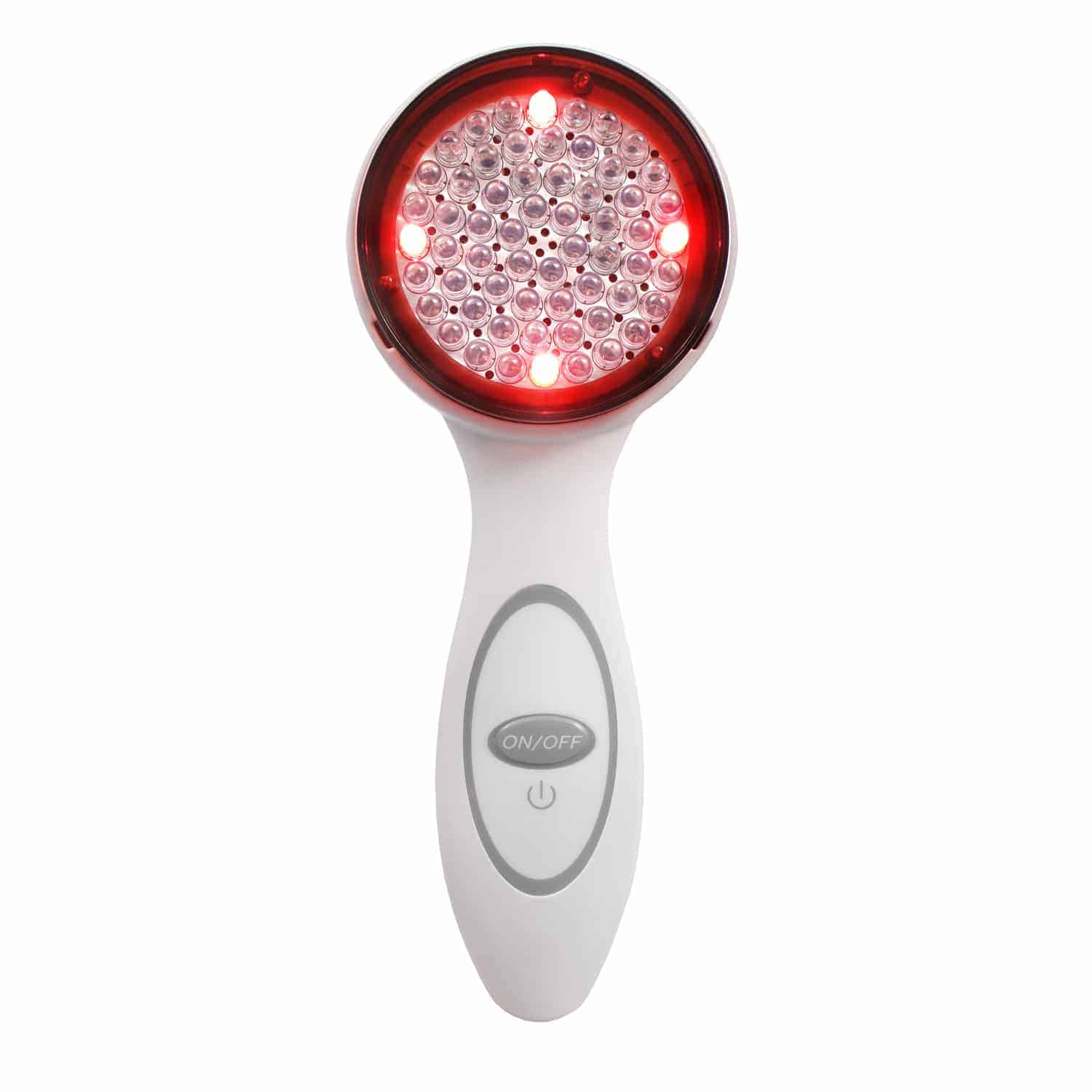
This usually retails for about $99 USD. If you want to try this or any other Carex device, just use this link and enter THYROID10 at checkout for 10% off your purchase!
Orion Red Light Therapy
One of my readers recommended Orion for red light therapy, and this device looks promising! Orion has infrared light boxes in a range of sizes and price points, which can help to support mood, improve energy, improve focus, support cellular health, relieve pain, improve circulation, and more. If you’re looking for a hands-free option that offers broader exposure to red light (rather than a handheld device that is super targeted), you may want to start with the Orion Pro 300 (pictured below).
You can order it with a tabletop stand, then order additional units to broaden the red light exposure. They also offer larger models of this device if you want an all-over hit of right light therapy. I believe this could be great for mood, sleep, skin health, and pain issues that are less specific.
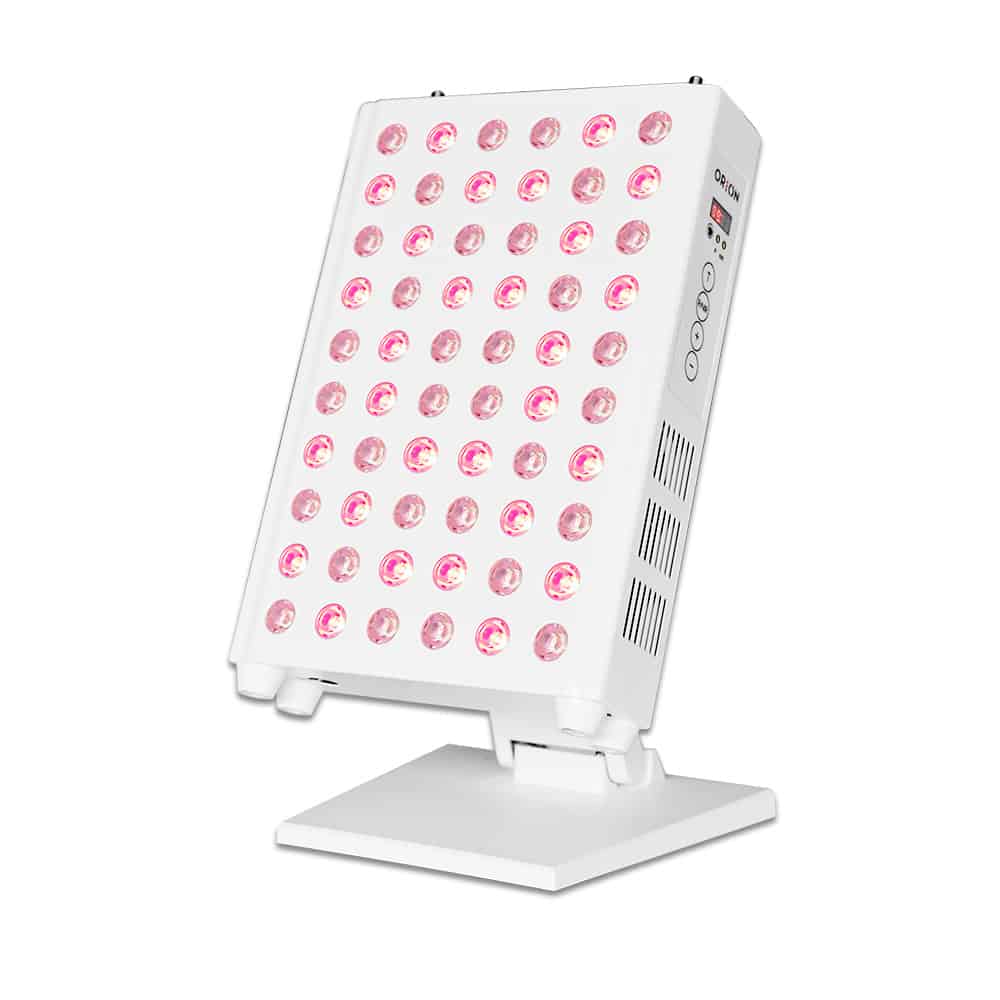
If you want more coverage, you might want to opt for an even larger free-standing unit that will deliver incredible health benefits to your whole body! Just 15 minutes a day, once or twice a day, is all you need.
These devices are “flicker-free”, which means they would be a good choice for those who are prone to migraines or are simply sensitive to light. They come with protective eyewear to be worn at all times. (Even though these products are safe to use, they may not be the best choice for those who don’t want any light at all in the face or eye area.)
On the Orion website, use this link and enter the code IZABELLA10 at checkout to get 10% off this device or any other Orion purchase!
By the way, I am currently giving away one of these devices over on Instagram!
Joovv Red Light Therapy
The Go 2.0 from Joovv is a popular handheld light therapy device recommended by various health experts and is great for muscle and joint pain, inflammation, relaxation, improving circulation, and more. At only 5.75 x 3.75 inches, it’s about the size of an iPhone, and probably the smallest one I’ve seen yet! Simply hold it about 6 to 12 inches away from the target area, for about 10 minutes per session.
I love this one in particular, not only because of the cool handle, but because it comes with a charger and travel case (you can opt to buy a charging dock as well). It even comes with Bluetooth technology so you can pair it with your smartphone and use features like recover mode, alarm clock, ambient mode, etc.
This is a great choice for those looking for a portable option that targets a smaller area. If you are looking for something that covers either a bigger area or the whole body, take a look at something in their moderate or full-size category. Check out the other products in this handy guide.
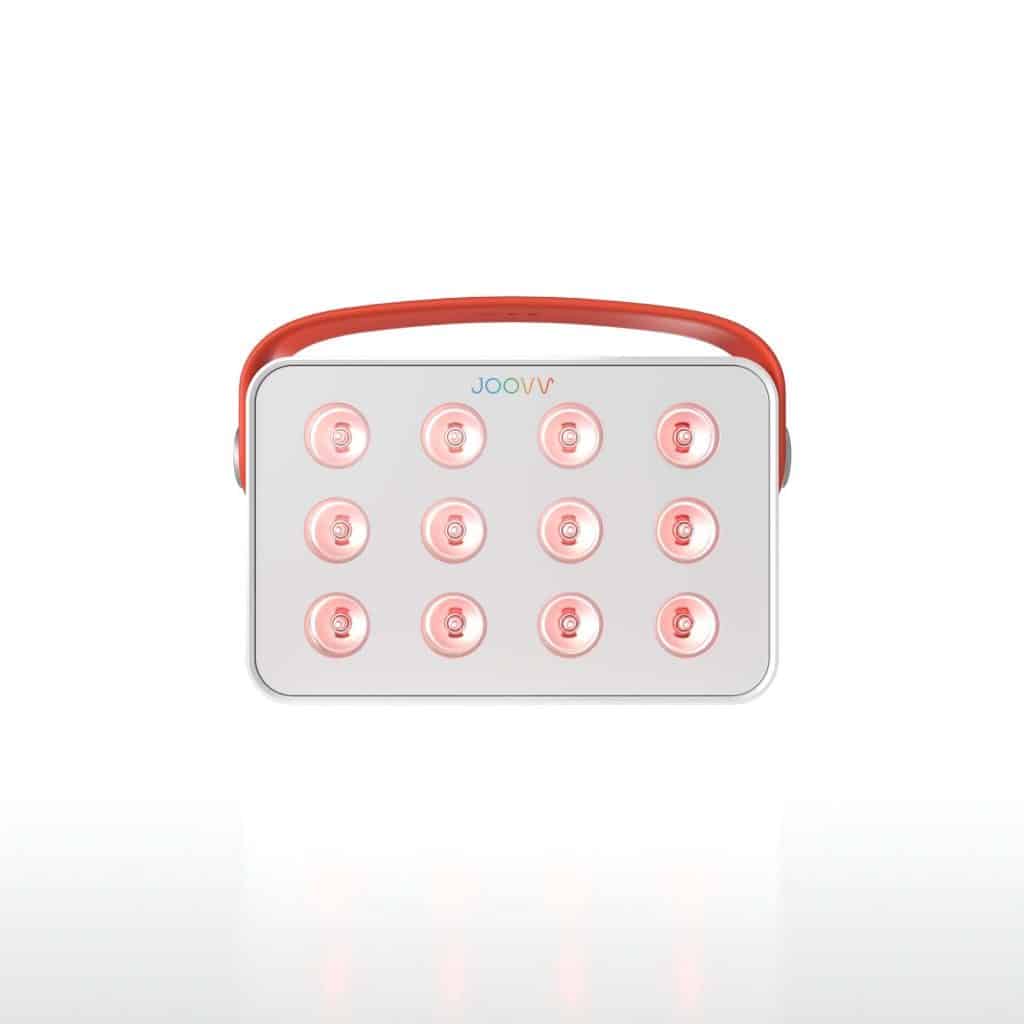
The Go 2.0 normally retails for $649 USD, but my readers and clients get $50 off every purchase – just use the code THYROID at checkout!
Hooga Red Light Therapy
This Hooga HG 300 unit is one of the more affordable options in this size (it is 12.2 x 8.2 x 2.5 inches, with a maximum coverage area of 31 x 28 inches). This is a great choice if you want a bit more coverage than what a handheld device will offer, and are looking for a hands-free (wall- or door-mounted) option, but aren’t quite ready to invest in a full-body unit. Benefits include anti-aging, improving skin tone and texture, relieving pain, wrinkle reduction, improving sleep, improving mood, reducing fatigue, helping with focus, and more.
One unique feature of this unit is that you can change the power switches between red and NIR for customized benefits. It comes with a hanging kit, door mount, and protective eye goggles. To use it, hold the light about 3 to 6 inches away and direct it towards the targeted area for about 5 to 10 minutes. (Be sure to use the protective eyewear if you are sensitive to light.)
I find this to be a very affordable option for the size, but if it’s not for you, I encourage you to check out the other products on their website — you can’t go wrong with their 60-day trial period and 3-year warranty!
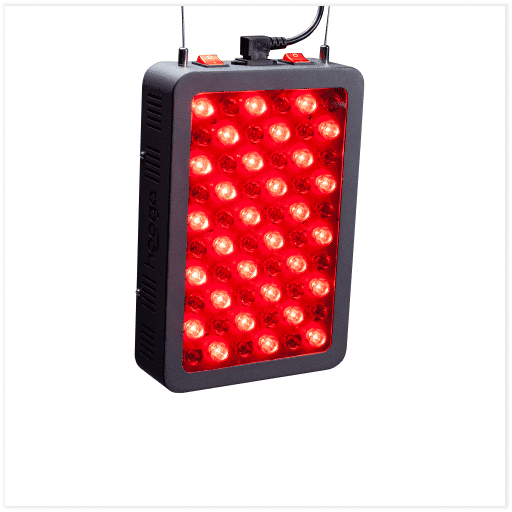
The Hooga HG 300 typically retails for about $159 USD — use this link and code THYROID12 at checkout for 12% off!
Safety, Effectiveness, and Accessibility of LLLT
When I first wrote a version of this article in 2017, LLLT was still considered experimental and not super accessible; it was only performed at the Thyroid Outpatient Clinic of the Endocrinology and Metabolism Department at the Hospital das Clínicas, Faculdade de Medicina da Universidade de São Paulo in Brazil.
As much more research has come out, it appears that LLLT therapy is useful, non-invasive, and generally safe. Over the past several years, more clinics have begun offering cold laser therapy worldwide, and the FDA has approved some devices for specific therapeutic uses in medical settings.
Various red light therapy devices have also hit the market which are generally FDA-approved. However, they are not FDA-approved for specific uses, such as thyroid health, in the U.S.
Individual doctors may still be able to utilize this therapy with their patients as an “off-label” use.
Lasers used in clinical settings will typically be stronger and have the potential to be more effective, but they also require trained professionals to administer the therapy — and in this day and age, they are not super accessible or affordable.
In contrast, the at-home LED devices offer a cost-effective option for people who may benefit from red light therapy but do not have access to professional-grade lasers. It’s important to note that while the clinical trials have been done using lasers, the LED devices only have anecdotal evidence of being effective at this point.
With the laser therapies used in medical settings, a person goes into a clinic to get a series of treatments over the course of a few weeks or few months, and researchers noted that the effects of a given course of therapy may not last forever; furthermore, that person may need to go in for “maintenance” on an annual basis. But the in-home LED devices can be used on a daily or weekly basis.
My theory is that along with the Root Cause approach of removing thyroid triggers, LLLT can potentially result in a functional cure of Hashimoto’s for additional people.
Please note, this therapy has not been tested on people who take immunosuppressants like corticosteroids, on those with thyroid nodules, nor on those with hypothyroidism from postpartum thyroiditis or Graves’ disease.
If you have had your thyroid gland destroyed or removed surgically, or if you were born without a thyroid, LLLT is not likely to work.
However, stem cells may be a helpful tool that can regenerate a thyroid gland that has been damaged, and even surgically removed. I was also excited to learn about the Sernova Cell Pouch Therapy, currently in clinical trials for regenerating thyroid tissues after a thyroidectomy! More about that to come in future posts! [26]
For red light therapy at home, when used according to the instructions of any individual device, it is considered safe. However, there have been reports of burns and blistering from using RLT units (the causes are linked to falling asleep with the unit in place, and broken wires or device corrosion). Another potential risk is damage to the eyes — this is easily prevented by proper eye protection, which is usually included with products sold for home use.
In addition, I’d recommend taking precautions if you are pregnant, or if you have a history of seizures (some use pulsing lights). Again, some do come with safety glasses, so be sure to protect your eyes.
Takeaway
While research with low-level laser and red light therapy on Hashimoto’s specifically is still lacking, I’m glad to see a few newer studies that have popped up in recent years which show promising results. At the very least, compared to a few years ago, there are now many more options for people to try this type of therapy in clinics as well as via LED red light therapy from the comfort of home.
When it comes to LLLT therapy, I believe that there’s so much potential for it to help relieve Hashimoto’s symptoms, reduce the need for hormone therapy, and generally support physical and mental well-being. I see it as an excellent complementary therapy for symptoms like joint pain, mood, and inflammation, and have seen improvements when I’ve used it myself.
I’m grateful for the work of laser companies, LED companies, clinicians, and research institutions who are focusing on using this as a promising complementary therapy in the United States, following the lead of Brazil and other countries which seem to be leading the charge.
While we’re making progress, the process has been slow and challenging.
I hope that this information helps you on your journey!
P.S. I share more strategies for regenerating thyroid tissue in Hashimoto’s Protocol.
P.P.S. If you are a clinician that is offering this therapy, please submit your information here, as I would love to build a database! 🙂 If you’re not yet offering this therapy, let this be a call to action for you to start offering it!
I love interacting with my readers on social media, and I encourage you to join my Facebook, Instagram, TikTok, and Pinterest community pages to stay on top of thyroid health updates and meet others who are following similar health journeys. For recipes, a FREE Thyroid Diet start guide, notifications about upcoming events, and the Nutrient Depletions and Digestion chapter from my first book for free, be sure to sign up for my email list!
References
[1] Nanan R, Wall JR. Remission of Hashimoto’s thyroiditis in a twelve-year-old girl with thyroid changes documented by ultrasonography. Thyroid. 2010;20(10):1187-1190. doi:10.1089/thy.2010.0102; Davies, TF. Pathogenesis of Hashimoto’s thyroiditis (chronic autoimmune thyroiditis). Ross, DS. UpToDate. Updated Jan 26, 2022.
[2] Takasu N, Komiya I, Asawa T, Nagasawa Y, Yamada T. Test for recovery from hypothyroidism during thyroxine therapy in Hashimoto’s thyroiditis. Lancet. 1990;336(8723):1084-1086. doi:10.1016/0140-6736(90)92567-2
[3] Hossein-Khannazer N, Kazem Arki M, Keramatinia L, Rezaei-Tavirani M. Low-Level Laser Therapy in the Treatment of Autoimmune Thyroiditis. J Lasers Med Sci. 2022;13:e34. Published 2022 Aug 24. doi:10.34172/jlms.2022.34
[4] Ibid.
[5] Azevedo LH, Aranha AC, Stolf SF, Eduardo Cde P, Vieira MM. Evaluation of low intensity laser effects on the thyroid gland of male mice. Photomed Laser Surg. 2005;23(6):567-570. doi:10.1089/pho.2005.23.567
[6] Morcos N, Omran M, Ghanem H, Elahdal M, Kamel N, Attia E. Phototherapeutic Effect of Low-Level Laser on Thyroid Gland of Gamma-Irradiated Rats. Photochem Photobiol. 2015;91(4):942-951. doi:10.1111/php.12465
[7] Silveira VS, Mayer L, Gerhardt de Oliveira M, de Carvalho ALH, Weber JBB. Systemic Effects of Photobiomodulation on the Morphology of the Thyroid and Sublingual Glands: A Study in Rabbits. Photobiomodul Photomed Laser Surg. 2020;38(7):425-430. doi:10.1089/photob.2019.4701
[8] Höfling DB, Chavantes MC, Juliano AG, et al. Low-level laser therapy in chronic autoimmune thyroiditis: a pilot study. Lasers Surg Med. 2010;42(6):589-596. doi:10.1002/lsm.20941
[9] Höfling DB, Chavantes MC, Juliano AG, et al. Low-level laser in the treatment of patients with hypothyroidism induced by chronic autoimmune thyroiditis: a randomized, placebo-controlled clinical trial. Lasers Med Sci. 2013;28(3):743-753. doi:10.1007/s10103-012-1129-9
[10] Höfling DB, Chavantes MC, Buchpiguel CA, et al. Safety and Efficacy of Low-Level Laser Therapy in Autoimmune Thyroiditis: Long-Term Follow-Up Study. Int J Endocrinol. 2018;2018:8387530. Published 2018 Nov 4. doi:10.1155/2018/8387530
[11] Höfling DB, Chavantes MC, Juliano AG, et al. Assessment of the effects of low-level laser therapy on the thyroid vascularization of patients with autoimmune hypothyroidism by color Doppler ultrasound. ISRN Endocrinol. 2012;2012:126720. doi:10.5402/2012/126720
[12] Mikhailov V, Alexandrova O, Denisov I, editors editors. Use of the immunomodulative influence of low-level laser radiation in the treatment of an autoimmune thyroiditis. Laser Florence’99: A Window on the Laser Medicine World; 2000. International Society for Optics and Photonics; Hossein-Khannazer N, Kazem Arki M, Keramatinia L, Rezaei-Tavirani M. Low-Level Laser Therapy in the Treatment of Autoimmune Thyroiditis. J Lasers Med Sci. 2022;13:e34. Published 2022 Aug 24. doi:10.34172/jlms.2022.34
[13] Ercetin, C. et al. Impact of Photobiomodulation on T3/T4 Ratio and Quality of Life in Hashimoto Thyroiditis. Photobio. Photomed. Las. Surg. 2020; 38(7): 409-412. https://www.liebertpub.com/doi/10.1089/photob.2019.4740; Red Light Therapy for Hashimoto’s Thyroiditis. Red Light Rising. July 19, 2021. Accessed May 25, 2023. https://redlightrising.co.uk/2021/07/19/red-light-therapy-for-hashimoto-thyroiditis/
[14] Hossein-Khannazer N, Kazem Arki M, Keramatinia L, Rezaei-Tavirani M. Low-Level Laser Therapy in the Treatment of Autoimmune Thyroiditis. J Lasers Med Sci. 2022;13:e34. Published 2022 Aug 24. doi:10.34172/jlms.2022.34
[15] Hamblin MR. Mechanisms and Mitochondrial Redox Signaling in Photobiomodulation. Photochem Photobiol. 2018;94(2):199-212. doi:10.1111/php.12864; Chung H, Dai T, Sharma SK, Huang YY, Carroll JD, Hamblin MR. The nuts and bolts of low-level laser (light) therapy. Ann Biomed Eng. 2012;40(2):516-533. doi:10.1007/s10439-011-0454-7
[16] Ash C, Dubec M, Donne K, Bashford T. Effect of wavelength and beam width on penetration in light-tissue interaction using computational methods. Lasers Med Sci. 2017;32(8):1909-1918. doi:10.1007/s10103-017-2317-4; Laser Products and Instruments. U.S. Food & Drug Administration. Updated January 30, 20223. Accessed June 9, 2023. https://www.fda.gov/radiation-emitting-products/home-business-and-entertainment-products/laser-products-and-instruments
[17] Hossein-Khannazer N, Kazem Arki M, Keramatinia L, Rezaei-Tavirani M. Low-Level Laser Therapy in the Treatment of Autoimmune Thyroiditis. J Lasers Med Sci. 2022;13:e34. Published 2022 Aug 24. doi:10.34172/jlms.2022.34; Ash C, Dubec M, Donne K, Bashford T. Effect of wavelength and beam width on penetration in light-tissue interaction using computational methods. Lasers Med Sci. 2017;32(8):1909-1918. doi:10.1007/s10103-017-2317-4
[18] Hashmi JT, Huang YY, Osmani BZ, Sharma SK, Naeser MA, Hamblin MR. Role of low-level laser therapy in neurorehabilitation. PM R. 2010;2(12 Suppl 2):S292-S305. doi:10.1016/j.pmrj.2010.10.013
[19] Avci P, Gupta A, Sadasivam M, et al. Low-level laser (light) therapy (LLLT) in skin: stimulating, healing, restoring. Semin Cutan Med Surg. 2013;32(1):41-52.
[20] Chintavalakorn R, Saengfai NN, Sipiyaruk K. The Protocol of Low-level Laser Therapy in Orthodontic Practice: A Scoping Review of Literature. J Int Soc Prev Community Dent. 2022;12(3):267-286. Published 2022 Apr 13. doi:10.4103/jispcd.JISPCD_328_21
[21] Yeh SW, Hong CH, Shih MC, Tam KW, Huang YH, Kuan YC. Low-Level Laser Therapy for Fibromyalgia: A Systematic Review and Meta-Analysis. Pain Physician. 2019;22(3):241-254; Ahmad MA, A Hamid MS, Yusof A. Effects of low-level and high-intensity laser therapy as adjunctive to rehabilitation exercise on pain, stiffness and function in knee osteoarthritis: a systematic review and meta-analysis. Physiotherapy. 2022;114:85-95. doi:10.1016/j.physio.2021.03.011
[22] Cotler HB, Chow RT, Hamblin MR, Carroll J. The Use of Low Level Laser Therapy (LLLT) For Musculoskeletal Pain. MOJ Orthop Rheumatol. 2015;2(5):00068. doi:10.15406/mojor.2015.02.00068; Chung H, Dai T, Sharma SK, Huang YY, Carroll JD, Hamblin MR. The nuts and bolts of low-level laser (light) therapy. Ann Biomed Eng. 2012;40(2):516-533. doi:10.1007/s10439-011-0454-7
[23] de Andrade AL, Bossini PS, Parizotto NA. Use of low level laser therapy to control neuropathic pain: A systematic review. J Photochem Photobiol B. 2016;164:36-42. doi:10.1016/j.jphotobiol.2016.08.025
[24] Cavalli E, Mammana S, Nicoletti F, Bramanti P, Mazzon E. The neuropathic pain: An overview of the current treatment and future therapeutic approaches. Int J Immunopathol Pharmacol. 2019;33:2058738419838383. doi:10.1177/2058738419838383
[25] de Freitas LF, Hamblin MR. Proposed Mechanisms of Photobiomodulation or Low-Level Light Therapy. IEEE J Sel Top Quantum Electron. 2016;22(3):7000417. doi:10.1109/JSTQE.2016.2561201
[26] Kurmann AA, Serra M, Hawkins F, et al. Regeneration of Thyroid Function by Transplantation of Differentiated Pluripotent Stem Cells. Cell Stem Cell. 2015;17(5):527-542. doi:10.1016/j.stem.2015.09.004
Note: Originally published in April 2017, this article has been revised and updated for accuracy and thoroughness.
